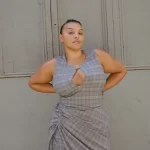Ahead of a general election in January, factory owners had warned that the wage increase would reduce their profit margins by five to six percent. Labour accounts for 10-13% of total manufacturing costs, industry estimates show
According to a U.S.-based association that represents more than 1,000 brands, international fashion retailers like H&M (HMb.ST) and Gap (GPS.N) are dedicated to increasing purchase prices for apparel made in Bangladesh to help factories there offset higher worker wages.
After China, Bangladesh is the world’s largest exporter of clothing. The government ordered this week, following fatal protests between police and factory workers, an almost 60% increase in the minimum monthly wage to 12,500 taka ($113) starting in December—the first increase in five years.
Ahead of a general election in January, factory owners had warned that the wage increase would reduce their profit margins by five to six percent. Labour accounts for 10-13% of total manufacturing costs, industry estimates show.
Bangladesh’s garment industry, which employs roughly 4 million people, has grown thanks in part to low wages. With nearly 16% of GDP going towards them, ready-made clothing is a vital component of the economy.
According to data from the International Labour Organisation, Bangladesh still lags behind other regional centres of garment manufacturing, like Vietnam, where the average monthly wage is $275, and Cambodia, where it is $250, even after the increase in the minimum wage, which some workers felt was too little.
AFA members Abercrombie & Fitch (ANF.N) and Lululemon (LULU.O) informed Bangladeshi Prime Minister Sheikh Hasina last month that they wanted wage increases for workers that also took into account the country’s 9% inflation rate. In July, Lamar also wrote to Hasina.
The primary consumers of clothing made in Bangladesh are retailers located in the United States and Europe. Fashion brands, like the majority of retailers of consumer goods, are facing challenges from high inventories and a slowing global economy, which is causing consumers in important markets to cut back on their purchases.
Source : First Post




























